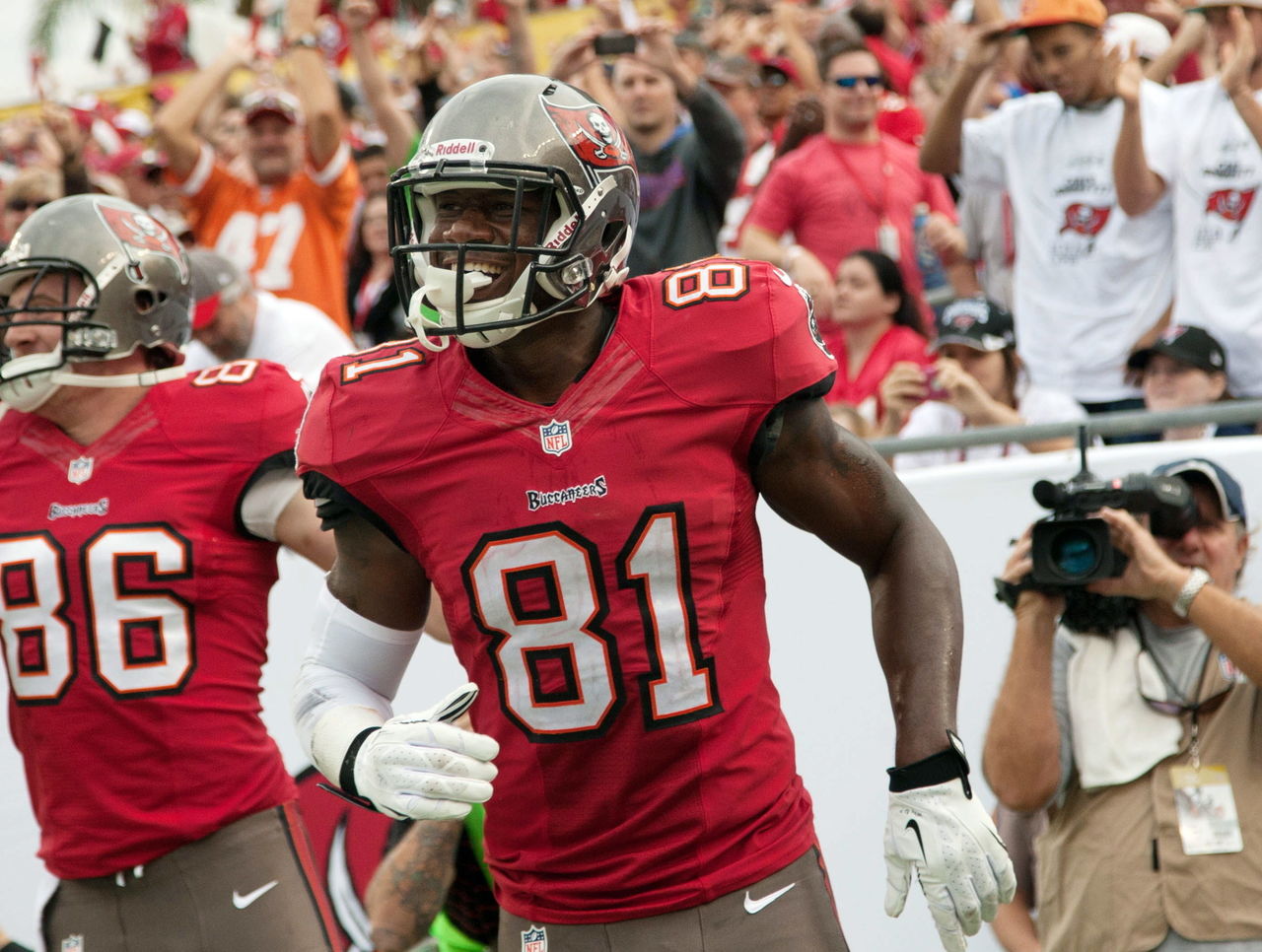Film Room: How newly-acquired tight end Tim Wright will impact the Patriots offense
Teams can find players anywhere. After the 2013 NFL Draft, the Tampa Bay Buccaneers perused the undrafted free agents market and found a Rutgers wide receiver by the name of Tim Wright. He was 6-foot-4, 220 pounds and ran a 4.65 40-yard dash. He was considered slow, but the Bucs saw potential.
They saw a tight end who would create a mismatch in the passing game. Wright wasn’t fast for a wide receiver, but he was for a tight end. He could run by and separate from linebackers and safeties. He was also more athletic than them, using his frame to high-point the ball.
In his rookie season, Wright developed quickly, and ended up catching 54 passes for more than 500 yards. He was used as a flex and in-line tight end, and ran various routes, including some double moves.

It wasn't long into the season before Wright made an impact. In Week 6 against the Philadelphia Eagles, he caught seven passes for 91 yards, including a crucial 10-yard deep out.
On a third-and-8 in a close game, the Bucs looked to their in-line “Y” tight end to move the chains. The defense knew it was coming and focused on eliminating Wright. They bracketed him underneath and above. The strong safety played outside and above, while the inside linebacker ran inside at Wright’s hip.
When Wright cut outside after a dozen-yard vertical stem, he ran away from the linebacker. He only had to deal with the safety, who was in position to make a big pass deflection before Wright made a subtle adjustment that some rookies forget to make.
He flattened out his route.
Wright ran parallel to the 25-yard line and effectively cut off the safety’s angle to his upfield hip. As the throw came in, Wright flattened the route more and came back to the ball, forcing the safety to play from behind and miss the pass altogether.
He’s a quick learner. He adjusts in-game and understands the situations he’s in. Whether he flattens out his route, rounds it or protects his body from taking a big hit, Wright shows the ability to adjust. He showed this again 11 weeks later, when he caught five passes for 58 yards and one touchdown against the New Orleans Saints.
In the game, the Bucs were faced with another crucial third down and looked to Wright to get them out of it. He ran a deep vertical stem and widened it out near the numbers after flexing out three yards from the right tackle.
To the inside, a safety was playing soft zone coverage and struggling to run with the first-year tight end. Wright was too fast and athletic for his size, and when he started to bend back to the middle of the field, he quickly found an opening.
The second he passed the safety, Wright craned his neck back to the quarterback and looked for the throw. The deep safety was incoming, so too, was the middle linebacker, but Wright was prepared. He dove for the low pass and caught it for a 24-yard gain.
Wright’s first year was promising, but the Buccaneers weren’t happy with the start of his second. A new head coach, Lovie Smith, came in and Wright was forced to learn his second offense in two years.
"He hasn't played as well as Tim should be playing," Smith said. "He's dropped some balls. If you watched practice, he's dropped balls. But he's a big part of what we want to do with the two-receiver, two-tight-end set. Tim hasn't blocked as well inside. Once you're that H-back and you don't block, now they say you're just another receiver and teams start going nickel. If they do that at least you have to be a good pass catcher. Tim's a good player. He just hasn't played as well as he needs to lately."
Less than two weeks after the comments, the Bucs stunned the league and traded Wright and a 2015 fourth-round pick in exchange for Patriots left guard Logan Mankins.
Now in New England, Wright is learning his third offense in two years. He’ll be learning a more complicated offense that’ll likely require him to make more sight adjustments on the fly from different positions than he did during his rookie season.
In Tampa, he primarily played the slot, where he lined up at 62 percent of his snaps, according to Pro Football Focus.
In New England, he’ll likely play in the slot, in-line and in the backfield. He’ll be their H-back, a position they’ve sorely lacked the last couple of years, and will create conundrums for defenses.
Do they focus on him or star Rob Gronkowski?
Do they prepare for run or pass?
What about when he runs deep, where his two touchdowns were the fourth-most at his position?
As he adjusts, Wright has to keep improving other areas of his game, including his route running and blocking. He cuts too hard and tries to do too much to shake linebackers off and sometimes this makes it harder for him to separate, but it’s a fixable problem many young players have, including undrafted free agents.